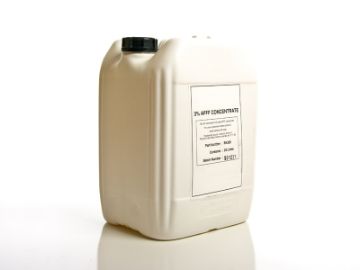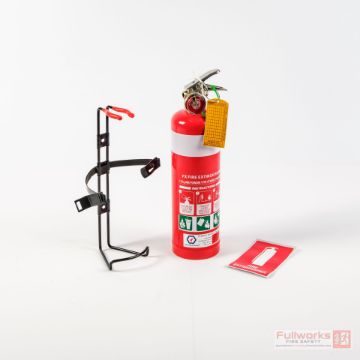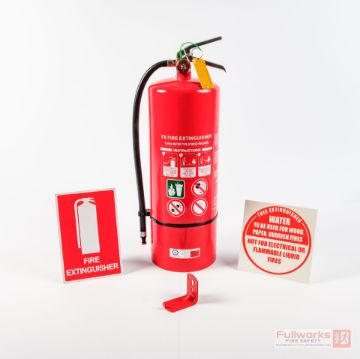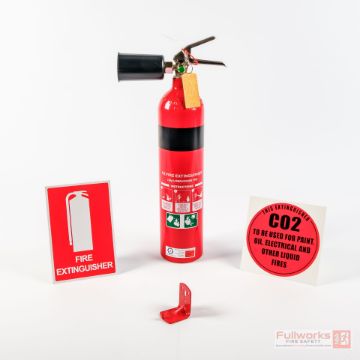
Having the correct fire extinguisher is crucial to protect property and keep people safe. Different extinguishers are designed for different types of fires, with various agents used to extinguish everything from paper and wood to oils and metals. Using the wrong type of extinguisher can be ineffective and potentially dangerous, so it's important to get it right.
Having the right extinguisher at hand helps you to respond quickly and effectively. This reduces the risk of the fire spreading, and helps to prevent property damage and personal injury. Along with safety issues, access to a fire extinguisher is an important part of compliance in many settings.
In this article, we offer an in-depth overview of fire extinguisher types and their applications.
Types of Fire Extinguishers and Their Uses
There are five different types of fire extinguishers, with each type designed to handle different combustibles.
- Class A or dry chemical extinguishers are for ordinary combustibles like wood and paper.
- Class B or water extinguishers handle flammable liquids such as gasoline or oil.
- Class C or carbon dioxide extinguishers are designed for electrical fires.
- Class D or wet chemical fire extinguishers are used for combustible metals like magnesium or titanium.
- Class K or foam extinguishers are for fires involving petrol, cooking oils, or fats.
Dry Chemical Fire Extinguishers
These fire extinguisher types use monoammonium phosphate, a dry powder that smothers the fire and interrupts the chemical reaction. This type of extinguisher is known for its broad application, and it's often classified as a multi-purpose extinguisher. Dry chemical fire extinguishers are suitable for wood, paper, flammable liquids, and electrical equipment fires. They're designed for use in homes, offices, and workshops, and they cover the following three fire classes:
- Class A Fires: Fires involving ordinary combustibles like wood, paper, and cloth.
- Class B Fires: Fires involving flammable liquids such as gasoline, oil, and grease.
- Class C Fires: Electrical fires involving energised electrical equipment.
The multi-purpose nature and immediate action of these extinguishers make them very popular. While they require clean-up after use and aren't particularly effective for Class D fires, they provide reliable broad coverage for various fire scenarios.
Water Fire Extinguishers
These fire extinguisher types use water to cool and extinguish fires. The water helps to lower the temperature of the burning material below its ignition point, effectively putting out the fire. This category of extinguisher is suitable for wood, paper, and textiles fires, making it popular for homes, schools, and office use. Water fire extinguishers are ideal for:
- Class A Fires: Fires that consume ordinary combustibles such as wood, paper, and textiles.
Water fire extinguishers are affordable to purchase and straightforward to use. They use the cooling effect, with water not only extinguishing the fire but also cooling down the area to prevent reignition. However, these extinguishers are not suitable for flammable liquids and electrical fires. They're also not effective for combustible metals.
Carbon Dioxide (CO2) Fire Extinguishers
CO2 extinguishers displace and suffocate oxygen around the fire with CO2. The gas is stored in a liquid state under pressure, before being released to put out the fire. CO2 is ideal for environments where electrical equipment is present, such as server rooms, laboratories, and electrical rooms. It can also be used where flammable liquids are stored or used, such as workshops, laboratories, and industrial settings. These fire extinguisher types are suitable for:
- Class B Fires: Fires involving flammable liquids such as gasoline, oil, and solvents.
- Class C Fires: Electrical fires involving energised electrical equipment.
There are many advantages associated with these extinguishers. CO2 leaves no residue, it's non-conductive, and it doesn't cool the fire. This is beneficial for electrical fires and flammable liquid fires, including areas with electrical equipment. However, CO2 extinguishers are not suitable for fires involving solid combustibles, and they can pose a suffocation risk when used without proper ventilation.
Wet Chemical Fire Extinguishers
These types of fire extinguishers use a specially formulated chemical agent to extinguish the fire. A potassium-based solution is often used, with the agent reacting with oils and fats to effectively smother the fire. Wet chemical extinguishers are ideal for fires involving petrol, oil, and other flammable liquids. Wet chemical fire extinguishers are suitable for:
- Class K Fires: Fires involving cooking oils and fats, such as those found in deep fryers or cooking appliances.
Environments with flammable liquids benefit from these extinguishers, including, garages, workshops, and laboratories. They're also used widely in commercial kitchens, from restaurants and cafeterias to food production facilities. These extinguishers are designed specifically to handle grease fires, which can be challenging to control with other agents.
Foam Fire Extinguishers
These extinguishers use a foam solution to blanket the fire, smothering and cooling the flames. The foam creates a barrier that prevents oxygen from reaching the fuel. This type of extinguisher is ideal for fires involving petrol, oil, and other flammable liquids. It's often used in garages and workshops. It can also be used in factories and industrial settings. Foam fire extinguishers are suitable for:
- Class A Fires: Fires involving solid combustibles like wood, paper, and textiles.
- Class B Fires: Fires involving flammable liquids such as petrol, oil, and other hydrocarbons.
Foam fire extinguishers offer many advantages. They provide effective coverage to control and extinguish fires, and they're versatile enough for solid and liquid fires. They also provide a cooling effect to prevent reignition.
Factors to Consider When Choosing a Fire Extinguisher
There are many things to consider when choosing a fire extinguisher. Depending on your location and the materials you're surrounded by, it's important to measure risk and choose the right equipment for your needs. The following factors are vital:
- Select extinguishers based on the specific types of fire hazards in your environment.
- Ensure adequate coverage and accessibility based on the area’s size and layout.
- Place extinguishers in visible, accessible locations and ensure they are well-maintained.
- Provide training for users and select extinguishers that are easy to operate.
By considering these factors, you can protect your environment from fire risks and ensure an efficient response if a fire occurs.
Maintenance and Inspection
Proper maintenance and regular inspection of fire extinguishers are critical. Here’s what you need to know:
- Regular maintenance is crucial for the sake of reliability, compliance, and safety.
- Visual inspections are required for monitoring pressure, nozzles, hoses, labelling, and more.
- Professional inspections on a monthly, quarterly, or annual basis help to keep you protected.
- Extinguishers need to be replaced whenever they're damaged or expired.
- Extinguishers need to be recharged after use or if pressure is low, with hydrostatic testing often needed.
By following these maintenance and inspection guidelines, you can make sure your fire extinguishers perform effectively in the event of an emergency.
As you can see, there are many different types of fire extinguishers on the market. It's important to choose equipment that provides the most protection for your people and property. At Fullworks Fire Safety, we offer expert advice on extinguisher types, along with fire safety consultations and fire extinguisher servicing.
To learn more about the many types of fire extinguishers and their uses, please contact Fullworks Fire Safety.







